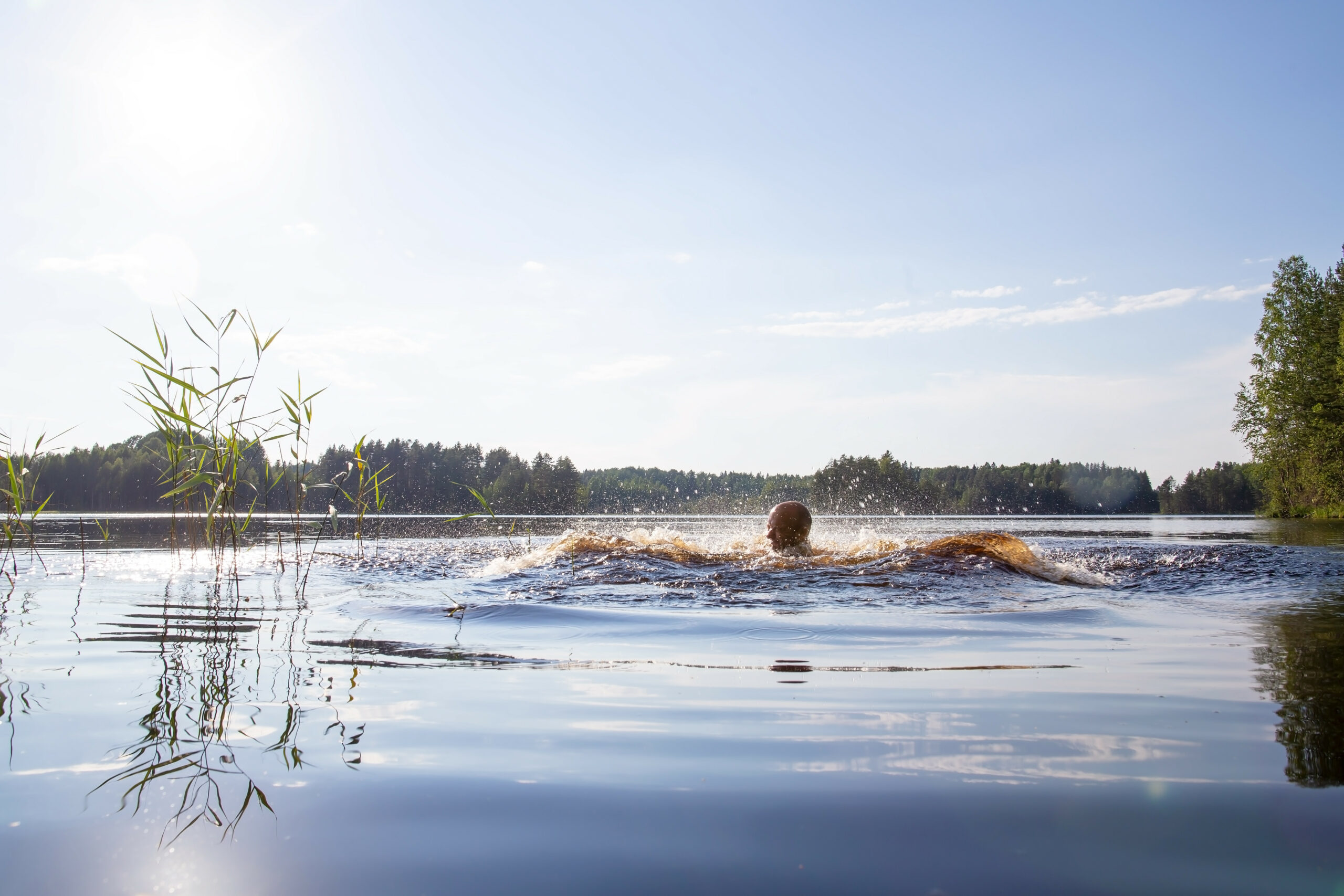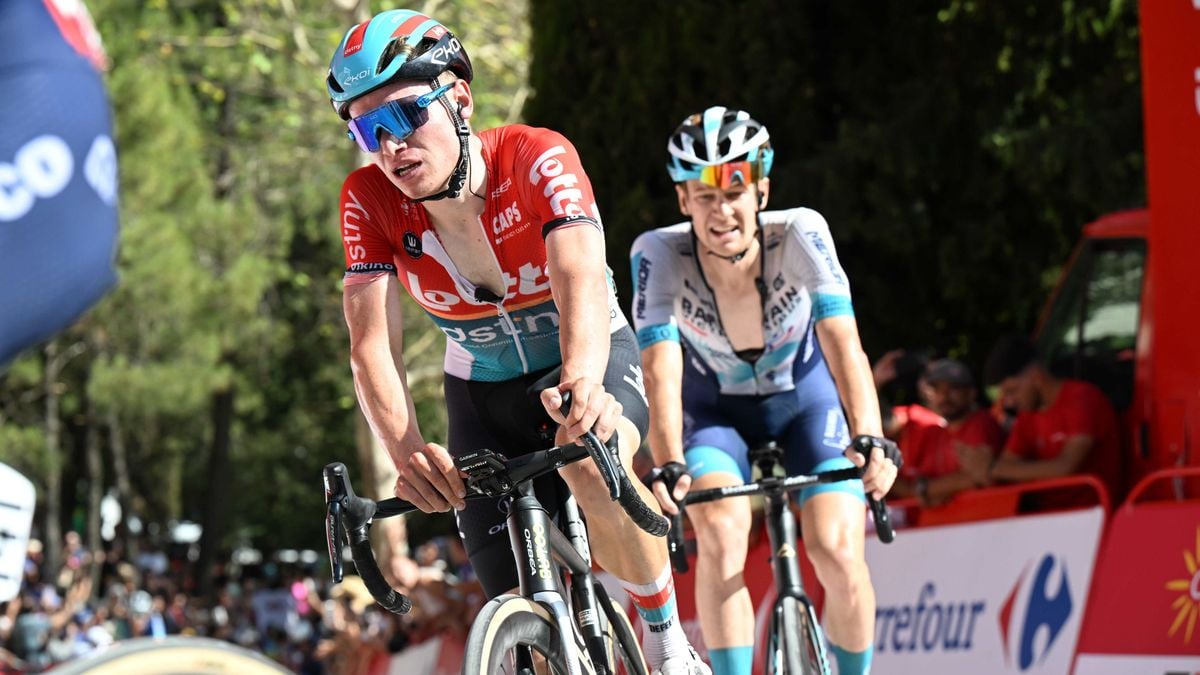Maria Rosen knows better than anyone how to play with the space in which she presents. She previously did this in the group exhibition she organized at Kasteel Het Nijenhuis in Overijssel and now at the Grote Kerk in Breda. Here she was inspired by religious themes and saw the possibilities that beautiful old interior design offered her.
during Irma van Bommel • Photography >Joep Eakins
RE-BELLE is the title of Maria Rosen's exhibition (Oisterwijk 1957) at the Grote Kerk in Breda. Rebellious is usually the work of this visual artist, but in Groote Kerk she adapted her subject to the church setting. There are no knitted penises and glass breasts here as in Het Nijenhuis Castle, but rosary beads, Jacob's ladders and Eva's apples.
Glass building blocks in primary colors
But the title could also literally mean the return of beauty. It was restored, because the medieval frescoes had been covered with a white layer of lime centuries ago and many of the original stained glass windows had been destroyed. Rosen points to stained glass windows with rows of glass building blocks in primary colors, colors that were previously used for stained glass windows. Glass building blocks were also used in Het Nijenhuis Castle. There they decorate the railing above the entrance.

Rosen allows us to look up into the church to the paintings rediscovered and restored in the vaults by placing small, mirrored objects at the top on columns in the nave. These are called “norms” and they seem to change shape as you pass them. It is a good idea to attract visitors with changing exhibitions who are not only impressed by the temporary artworks but also by the beauty that the church itself offers.

Two beautiful establishments stand out in Breda. First of all, a long series of glass balls in one of the side chapels. They are actually eyes that together form a rosary. What is special is that the rope is wrapped around the statues of the couple Dirk van Assendelft (1498-1553), mayor of Breda, and his wife Adriana van Nassau (1512-1558), placed high in a suitable place, thus connecting them. The “rosary” (nice pun) refers to the Christian faith, but the eye refers to popular beliefs from the Near East. The glass “eye” – nazar – protects against the evil of the “evil eye”.

The stairs refer to Jacob's ladder
The second installation that stands out is the one with high stairs in Prinsenkapel, near the crypt of Nassus. The stairs refer to Jacob's ladder, which reached heaven according to a story from the Book of Genesis. In fact, they are old hand-made fruit picking ladders hung high in the trees. Rosen has hung pomegranate, lemon, glass and real chains on it. Pomegranate symbolizes love and fertility. Lemon reminds us that love is not all sweet. Real fruits will spoil and thus indicate demise.

The exhibition features three sculptures made from thick logs, “Turn Magdalena Turn!” “Shelter” and “Widow”. All three depict a woman and are reminiscent of Matryoshka dolls. For “Widow,” Rosen followed the annual rings and gave each annual ring a different color. Mary Magdalene stands on a turntable and should be able to turn, but she stands still in the church. Colors now follow hair strands from head to toe. These are inspired by Donatello's famous wooden statue of Mary Magdalene with lots of hair acting as a cloak. The statue of Donatello, made around 1450, is located in Florence.




“Shelter 2” (2021). A chapel with breasts carved in wood refers to Saint Agatha.
Artist Collection / Fons Welters Gallery Amsterdam.
The shelter is black and the only sculpture is hollow, like a matryoshka doll. You can stand in it and that's okay. It is intended to be a chapel of peace and contemplation. But when holding the height there are breasts. But there is something rebellious about this show. They make a very enlightening reference to Saint Agatha (ca. 225-251), who in art history is often depicted with breasts on a platter. She was cut off after she refused to renounce her faith and respond to her attacker's advances. Agatha was canonized because she chose her faith. But in fact, her story is about killing women. It existed then and still exists today. It immediately and unintentionally reminds us of the brutal attack by Hamas fighters on October 7, 2023 on girls in Israel.
“Return Bill.” Color strength. Maria Rosen, until August 25, 2024 in the Grote Kerk in Breda. A booklet containing information about the works in the exhibition was published.
Front page image: Couples (2002) is placed on the upper choir in Kirk Breda's grote
Rebel, solo Maria Rosen – Groot Kirk Breeda
“Roosen & Guests”, until 9 June 2024 at Kasteel Het Nijenhuis in Heino/Wijhe.
Rosen and guests – Musée dei Fundati
Read also in Cultural Brabant:
Hopeful art in the Sacred Triangle in Oosterhout
© Cultural Brabant 2024

“Total coffee specialist. Hardcore reader. Incurable music scholar. Web guru. Freelance troublemaker. Problem solver. Travel trailblazer.”









More Stories
Brabanders are concerned about climate change.
The “term-linked contract” saves space on the electricity grid.
The oystercatcher, the “unlucky national bird,” is increasingly breeding on rooftops.